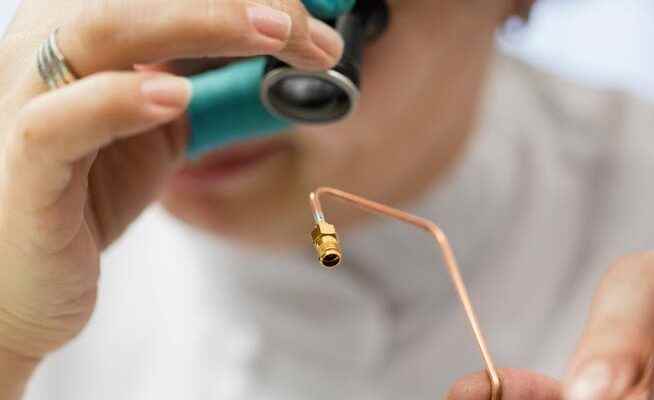The Appenzell-Zurich company Huber + Suhner has mastered the challenges of the past two and a half years in an exemplary manner. But the next test is already waiting.
Huber + Suhner is active in the field of electrical and optical connection technology.
Companies that still claim that they haven’t felt any signs of weakness are making people sit up and take notice. This is particularly true for industrial groups, which are struggling with a range of challenges including the rising threat of recession, high inflation and growing geopolitical conflicts. But Huber + Suhner (H+S) does not want to have identified a downturn in its business.
Broad clientele
“So far we have not noticed any slowdown in our key markets,” said CEO Urs Ryffel on the company’s first capital market day. The traditional company, which still has dual offices in Herisau and Pfäffikon in Zurich, is active in the field of electrical and optical connection technology.
Their special cables, fiber optic solutions and antennas are mainly used in the telecommunications, electronics, aerospace and defense industries, as well as in the transport sector (railways and electric cars). Geographically, sales, which reached 863 million francs last year, are distributed roughly half in Europe and around a quarter each in America and Asia.
According to various financial analysts, the group has mastered the past two and a half years, which have affected industrial companies worldwide due to the pandemic and repeated interruptions in supply chains, with ease. Many investors also seem to attest to good crisis management. The company’s share price has only fallen by 11 percent in the year to date, even after losing more than 2 percent on Friday. The dividend stocks of other Swiss industrial companies have lost 30, 40 or even 50 percent.
danger of getting lost
Right at the beginning of his presentation at the headquarters in Herisau, Ryffel flirted with the fact that he kept hearing that H+S operated in too many business areas. The company, which supplies hundreds of medium-sized and small customers with its components in addition to three dozen large customers, really has to be careful not to get bogged down.
In the past, this has not always worked as desired. In some cases, H+S attempted to advance into areas that proved to have insufficient margins or were even making losses. Ryffel, who has been running the company with a sure hand for five and a half years, has obviously cleaned up. He emphasized that the company, despite a workforce that now has around 5,000 employees, cannot rely on all horses.
On Friday, the company confirmed that it is aiming for an increase in consolidated revenue of 6 to 8 percent and a sales margin of 10 to 12 percent at the operating result (EBIT) level for the current year. In the medium term, in addition to sales of over CHF 1 billion, an EBIT margin of 9 to 12 percent is targeted. At the same time, Ryffel repeated earlier statements that 12 percent of the return on sales “is not the end of the road”.
Upgrade to Wi-Fi on trains
In order to achieve such performance values, however, H+S is dependent on opening up new sources of income. With all other successes, the transport sector has been a problem child for a long time. In the future, business in the field of communication for rail transport and driver assistance systems in particular should provide impetus. According to the company, passengers only have the option of surfing the Internet via WiFi on 10 percent of all trains. It doesn’t look much better in the vehicles of the SBB.
The deep penetration is apparently mainly due to costs. For WLAN access, wagon for wagon must be equipped with an antenna. An eight-car multiple unit would quickly add up to a six-figure sum, H+S representatives calculated.
The group is also still in the development phase for advanced driver assistance systems. A major order from the world’s largest automotive supplier, Bosch, is expected to bring in the first millions in sales next year. H+S expects it to be 2030 before the systems take over the steering completely and all occupants can lean back comfortably.
Short-time work again if necessary
The company is confident that the transition to electrically powered cars, in which the company is also increasingly involved (including through special cooled cables for charging stations), would not be held up even in a recession. “But we’re already on tiptoe,” Ryffel assured. The past has shown that an economic downturn can hit suppliers like H+S quickly and hard. This has to do with the fact that companies often stop projects in such phases. If they produce less themselves, their need for components also decreases.
If necessary, the company wants to use short-time work, as in the first year of the pandemic, 2020. In addition, you can save on various variable costs, said the company boss.
